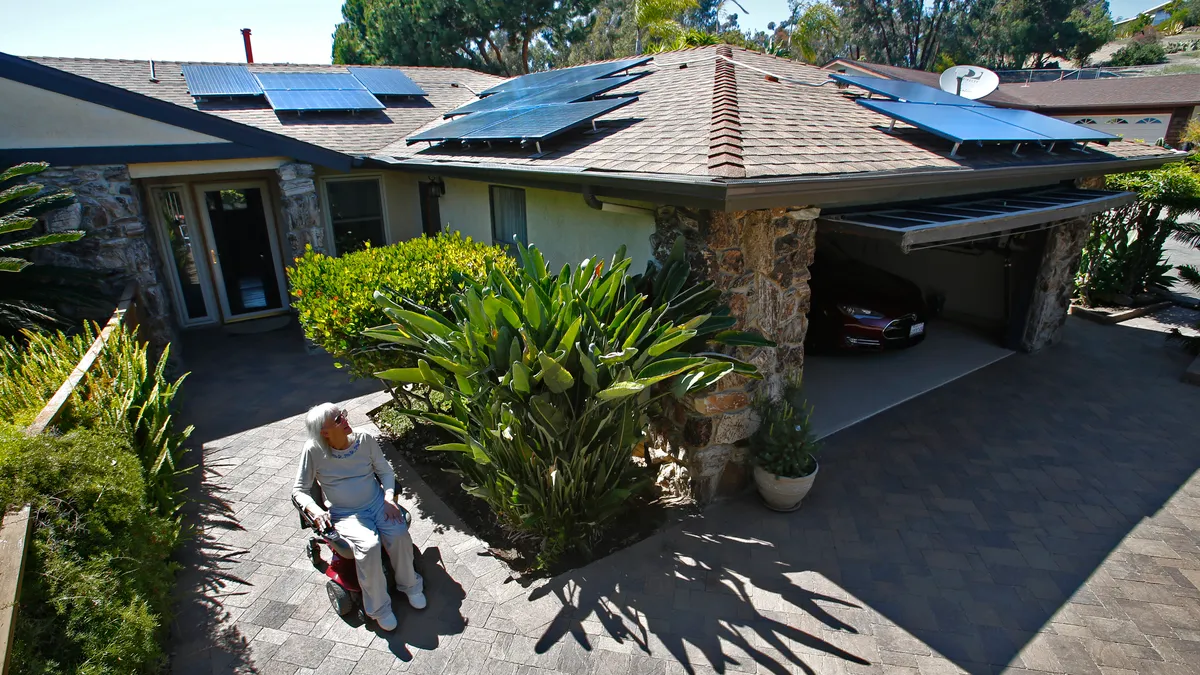Dive Brief:
- San Diego Gas & Electric (SDG&E) will likely be the first utility in California to surpass its net metering cap (5% of its peak demand) and enter into the new rates and fees designed by the NEM 2.0 proceeding, PV Tech reports.
- According to SDG&E's real-time net metering dashboard, the utility is 4.7 MW from hitting its 617 MW cap, with 37.4 MW of net metering applications left in the queue.
- Once the cap is breached, new net metering customers will shift to the new net metering fees and time-of-use rates set by the California Public Utilities Commission in their net metering decision earlier this year.
Dive Insight:
SDG&E sounded the alarm last year that the aggregate caps on net metered systems in California were close to being hit.
Now looks likely to receive the distinction of being the first utility to hit its limit. But unlike in other states, it's not a panic-inducing circumstance since the CPUC already has a solution in place.
Under a January regulatory decision, new net metering customers be able to keep retail rate remuneration for energy exported to the grid after the cap is hit. But they will also pay a one-time connection fee between $75 and $150, a non-bypassable charge from $0.02/kWh to 0.03/kWh, and will be switched to time-of-use rates.
The solar industry welcomed the new regulatory scheme, saying the commissioners understood the importance of retail rate net metering to sustain rooftop solar. Bernedette Del Chiaro, executive director of California Solar Energy Industries Association (CalSEIA) doesn't anticipate any slowdowns in rooftop solar installations in SDG&E's service territory after the cap is hit, according to PV Tech.
“The California Public Utilities Commission did a good job of making the change to net metering small enough to not cause significant harm to the market while also addressing some of the utility’s concern," she told the outlet. "It was a balancing act but one in which the California solar industry is primed and ready to step up to the plate and do its part to lower costs so that consumers feel no difference between the two different programs. If anything, we anticipate a return to growth as more consumers realize that NEM 2.0 isn’t a threat to the economics of solar and that now is just as good to go solar as ever."













